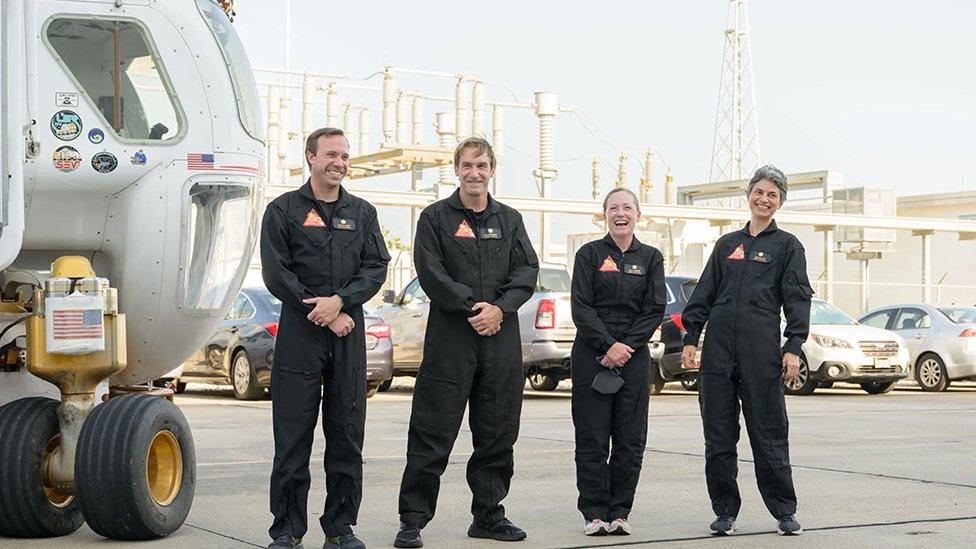Nasa wants crew to help space agency prepare for Mars mission
- Published
- comments

This was last year's CHAPEA team, made up of Nathan Jones, Ross Brockwell, Kelly Haston and Anca Selariu
One day humans hope to travel to Mars.
In preparation for that day, Nasa is looking for a new set of astronauts they can put through their paces and test what it would be like for humans to live there.
It's time for the second phase of the CHAPEA mission that simulates life on Mars from a lab in Houston in the US.
Nasa is using CHAPEA to work out what astronauts will need when it eventually sends a manned mission to Mars at some point in the future.
Sorry to disappoint - but candidates for the crew do need to be aged 30-55, have a masters in a STEM field and at least one thousand hours piloting an aircraft.
What is CHAPEA?
Almost like a highly scientific movie set - the CHAPEA mission hopes to find out what living on Mars could be like
CHAPEA stands for Crew Health and Performance Exploration Analog. The aim is to give astronauts experience of the sorts of conditions they will face on Mars, alongside lots of challenges, to find out what humans will need to be able to survive on the red planet.
Four astronauts started the first mission last year. Before humans can head to Mars, Nasa wants to carry out two further missions.
The team spends a year in a small, isolated building. They have to cope with communications issues, take part in simulated space walks, grow crops, and complete science experiments.
The crew will also have various medical tests to check how humans cope with the simulated environment.
When will humans be on Mars?
Nasa currently says it plans to send humans to Mars in the 2030s. They have many things to tackle before they can get there - including making a powerful enough vehicle, finding people willing to spend that long in space, and working out what needs to be sent up with the astronauts.
The journey to Mars and back is more than a thousand times the mileage covered by Artemis I.
As well as all of this, there are the many unexpected things that could happen along the way too.
That is why Nasa is working on CHAPEA - so they can be as prepared as possible.
Travelling into space needs a lot of resources, and costs a lot of money.
- Published28 June 2023
